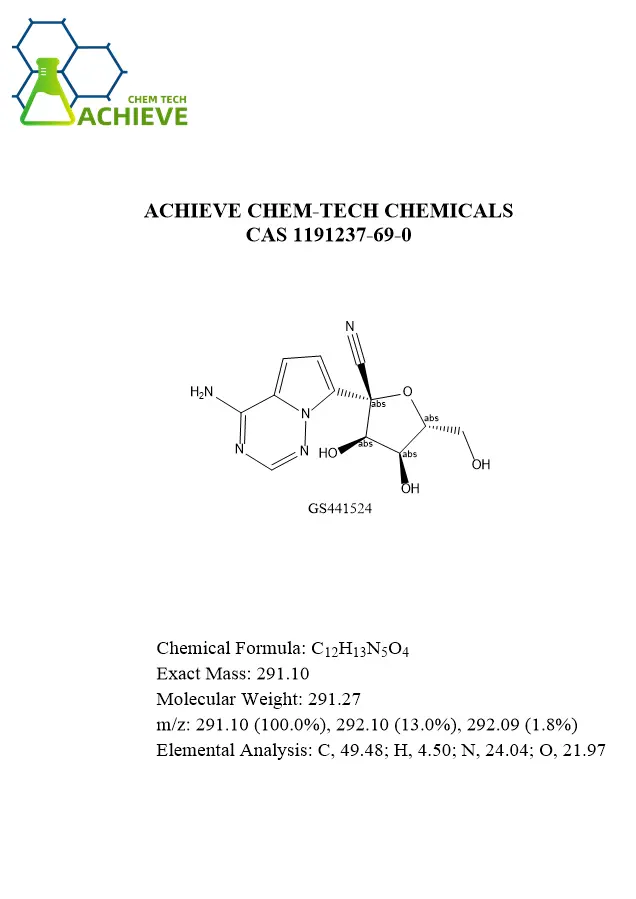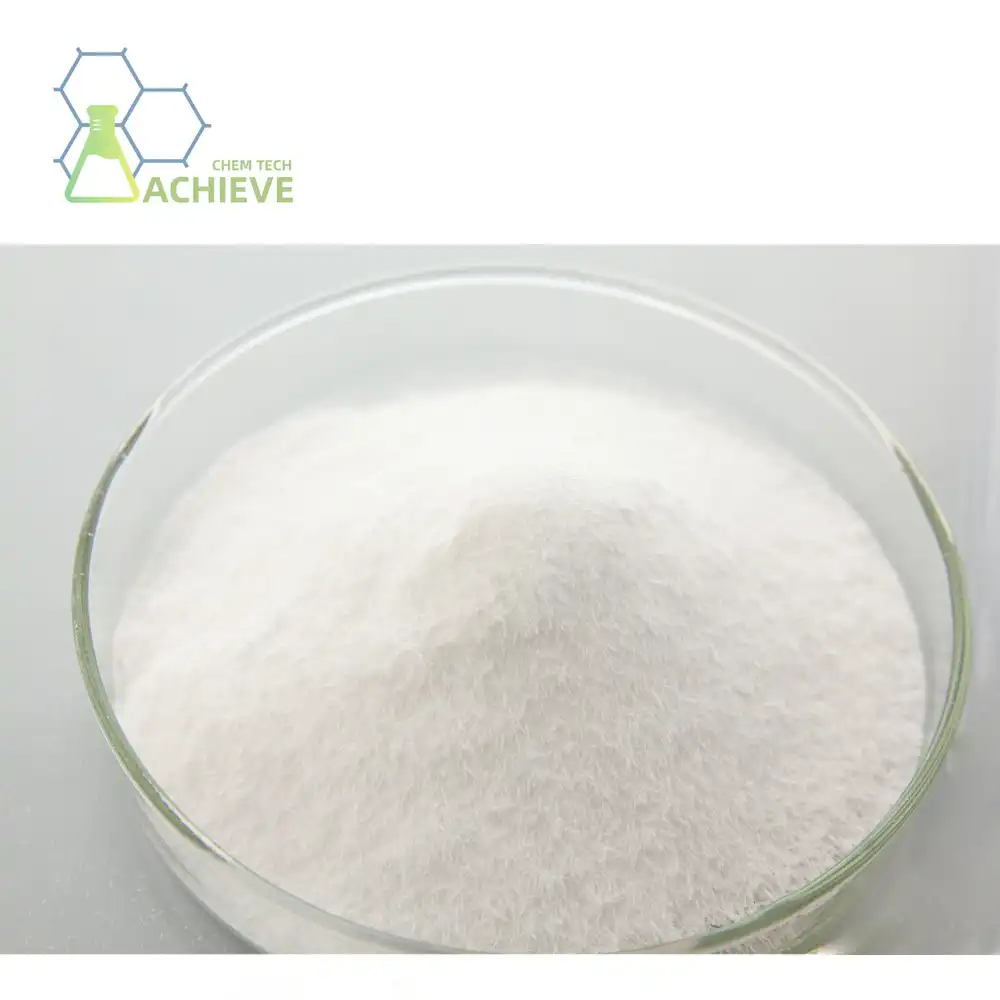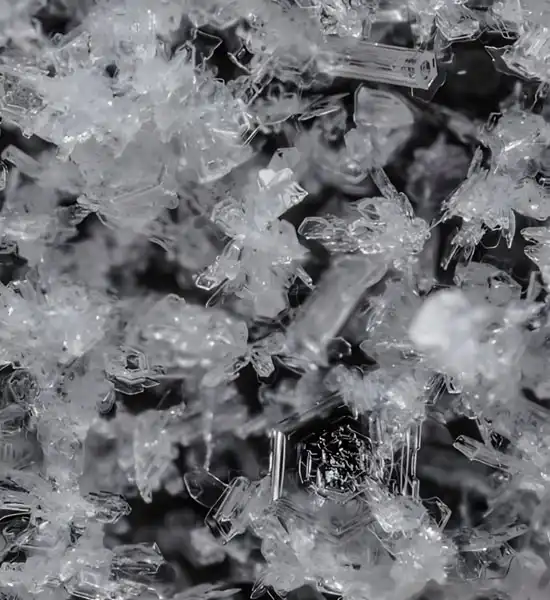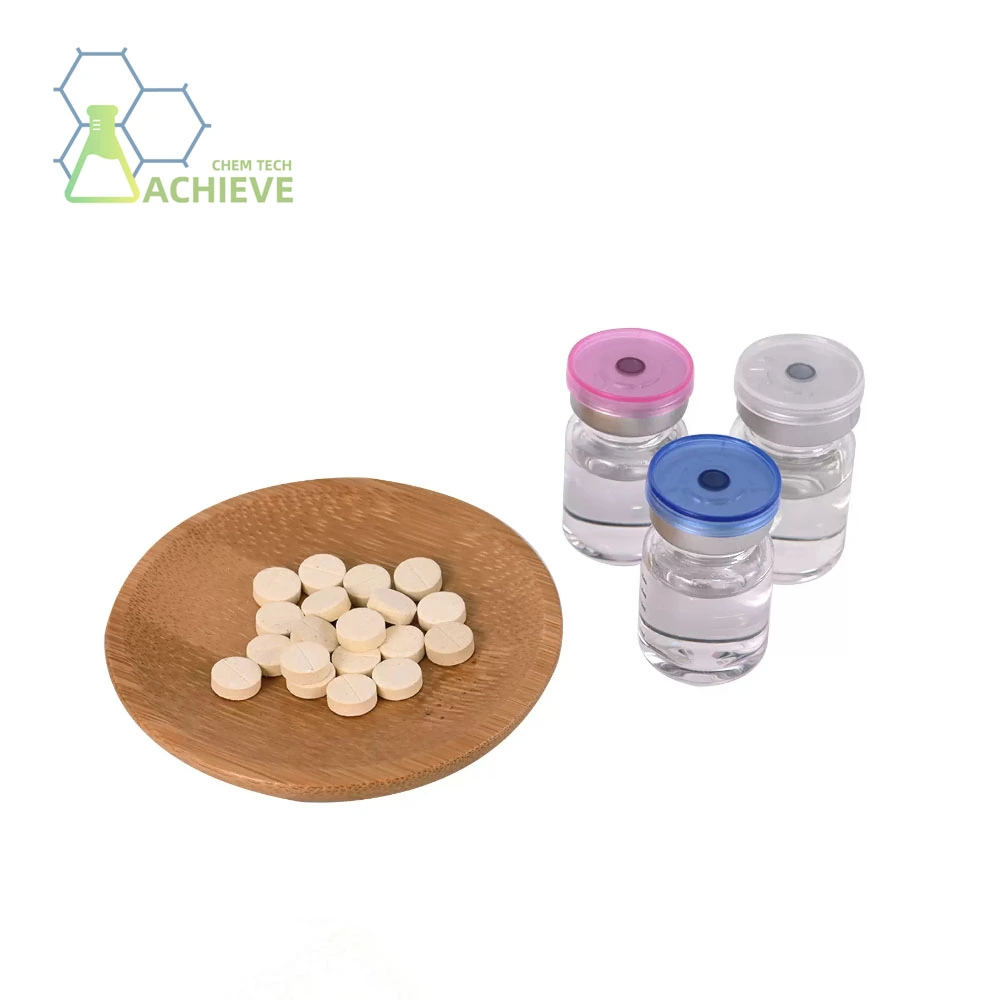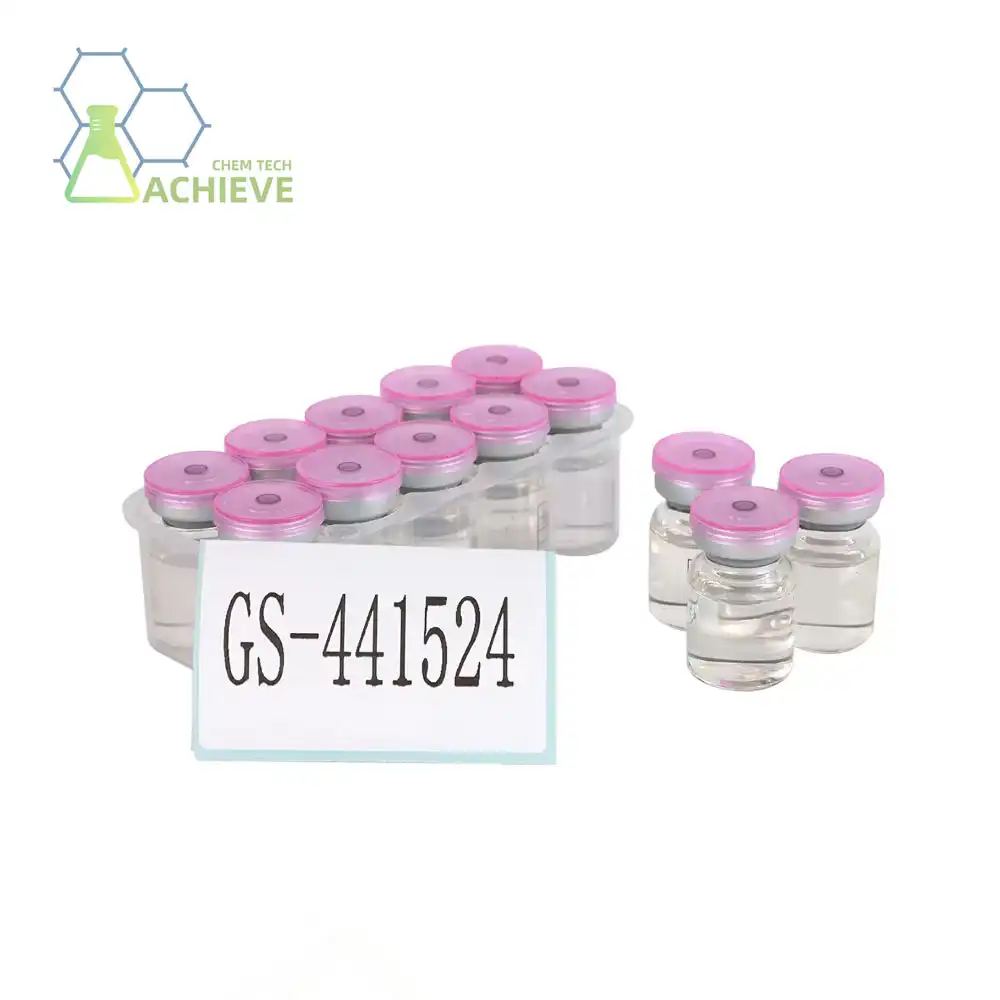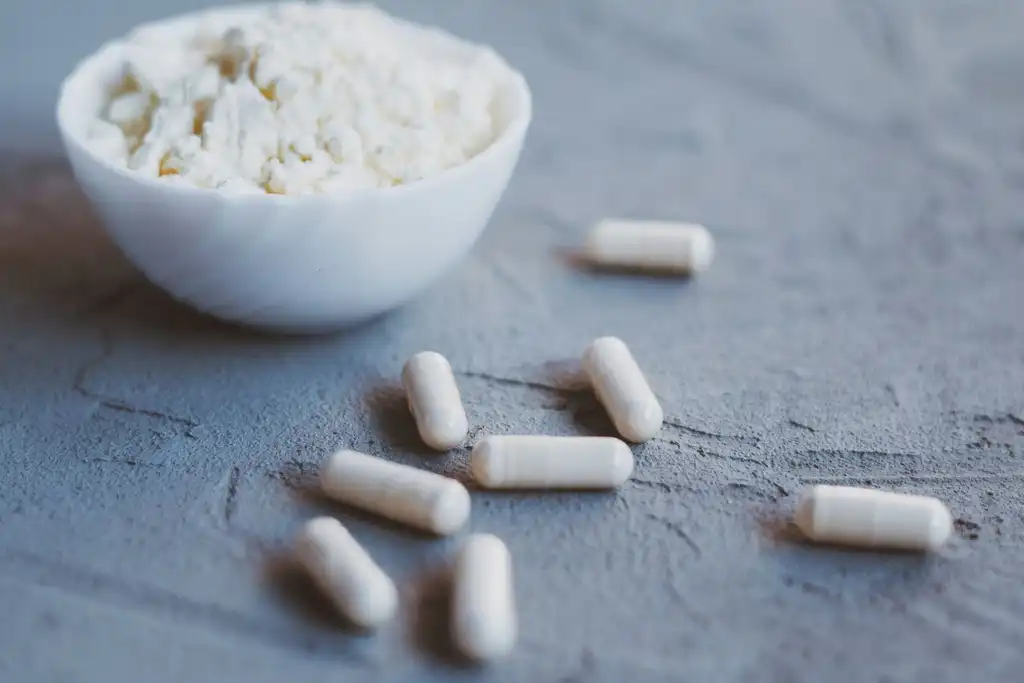What is the molecular structure of GS 441524 powder?
GS 441524 powder, a compound of significant interest in the pharmaceutical industry, has garnered attention for its potential therapeutic applications. Understanding its molecular structure is crucial for researchers and practitioners alike. This article delves into the intricacies of GS 441524's molecular composition, exploring its crystallographic features, structural elements, and comparative analysis with related compounds.
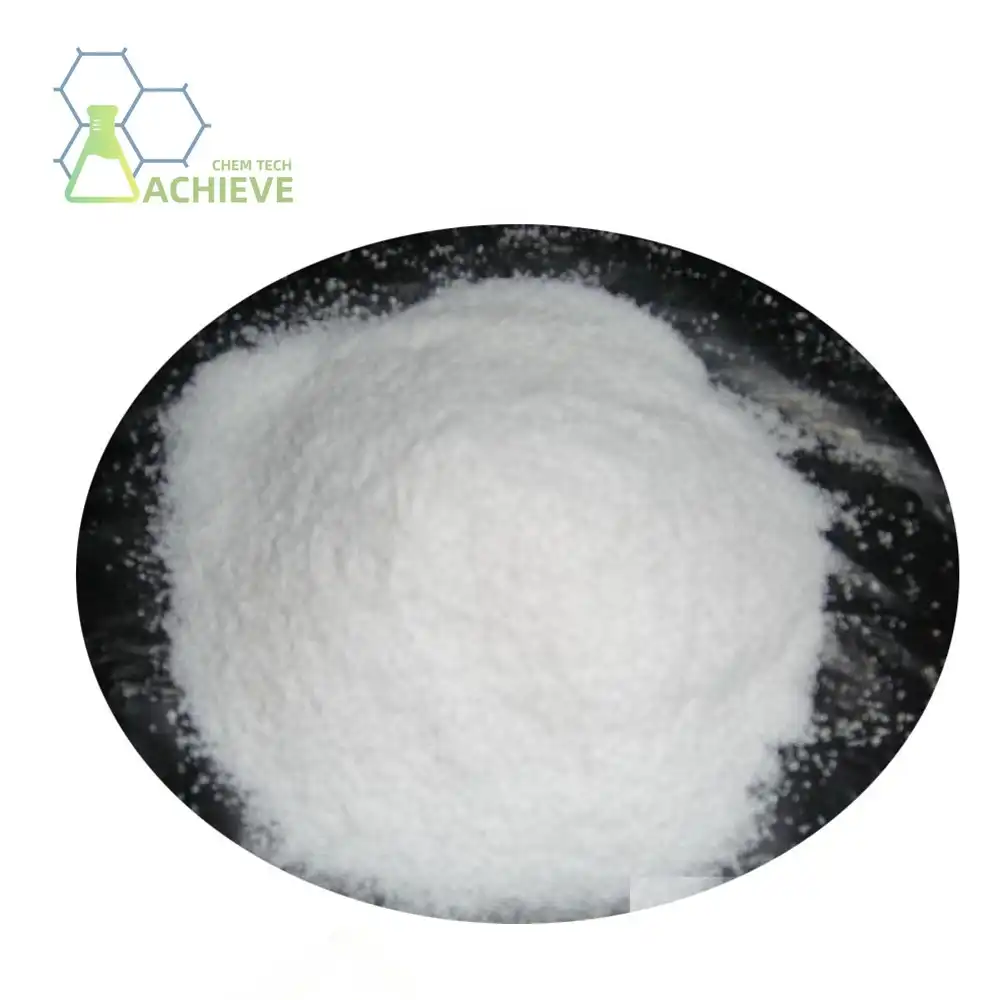 |
 |
GS 441524's Molecular Formula: Crystallographic Analysis
The molecular structure of GS 441524 powder is a testament to the complexity and precision of modern pharmaceutical compounds. At its core, GS 441524 is a nucleoside analog, belonging to a class of compounds that mimic the structure of natural nucleosides.
Elemental Composition and Molecular Weight
GS 441524 has a molecular formula of C12H13N5O4, indicating the presence of carbon, hydrogen, nitrogen, and oxygen atoms in specific proportions. Its molecular weight is approximately 291.27 g/mol, a crucial factor in understanding its behavior in various chemical and biological processes.
Crystalline Structure and Packing
In its powdered form, GS 441524 exhibits a crystalline structure. X-ray crystallography reveals that the molecules pack in a monoclinic crystal system. This arrangement contributes to the compound's stability and influences its solubility properties, which are essential considerations in pharmaceutical formulations.
|
|
|
|
What Role Does the 1'-Cyano Group Play in GS 441524's Structure?
One of the distinguishing features of GS 441524's molecular structure is the presence of a 1'-cyano group. This functional group plays a pivotal role in the compound's biological activity and chemical properties.
Influence on Antiviral Activity
The 1'-cyano group is not merely a structural oddity; it is integral to GS 441524's antiviral properties. This group enhances the compound's ability to inhibit viral RNA synthesis, a mechanism crucial in its potential therapeutic applications. The cyano group's positioning allows for optimal interaction with viral enzymes, potentially disrupting the replication cycle of certain viruses.
Metabolic Stability and Bioavailability
Beyond its direct antiviral effects, the 1'-cyano group contributes to GS 441524's metabolic stability. This structural feature helps protect the molecule from rapid degradation in the body, potentially extending its half-life and enhancing its bioavailability. Such characteristics are invaluable in drug development, as they can influence dosing regimens and overall therapeutic efficacy.
 |
 |
 |
Comparative Structural Features: GS 441524 vs. Remdesivir
To fully appreciate the molecular structure of GS 441524, it's instructive to compare it with related compounds, particularly remdesivir, which has gained prominence in recent medical discussions.
Structural Similarities and Differences
GS 441524 and remdesivir share a common nucleoside core structure, but they differ in several key aspects. While GS 441524 is the parent nucleoside, remdesivir is a phosphoramidate prodrug of GS 441524. This means that remdesivir undergoes metabolic activation in the body to form GS 441524, which is considered the active compound.
Implications for Drug Delivery and Efficacy
The structural differences between GS 441524 and remdesivir have significant implications for drug delivery and efficacy. Remdesivir's prodrug design aims to enhance cellular uptake and improve its pharmacokinetic profile. However, some researchers argue that direct administration of GS 441524 powder might offer advantages in certain therapeutic contexts, particularly in scenarios where rapid drug absorption is crucial.
Potential Applications in Veterinary Medicine
Interestingly, the structural characteristics of GS 441524 have led to investigations into its potential use in veterinary medicine. Some studies have explored its application in treating feline infectious peritonitis (FIP), a viral disease affecting cats. While not officially approved for this use, the exploration of FIP pills for cats based on GS 441524's structure highlights the compound's versatility and the ongoing research into its various applications.
Molecular Modeling and Future Drug Design
The detailed understanding of GS 441524's molecular structure serves as a foundation for future drug design efforts. Computational modeling of the compound's interactions with viral targets can guide the development of new antiviral agents. By analyzing the structure-activity relationships observed in GS 441524, researchers can potentially design more potent and selective antiviral compounds.
Challenges in Synthesis and Scale-up
The complex molecular structure of GS 441524 presents challenges in its synthesis and large-scale production. The presence of multiple chiral centers and sensitive functional groups necessitates precise control over reaction conditions and purification processes. Overcoming these challenges is crucial for ensuring the availability and affordability of GS 441524-based therapies.
Environmental Considerations
As with any pharmaceutical compound, the environmental impact of GS 441524 production and use must be considered. Its molecular structure influences its stability in the environment and potential for biodegradation. Understanding these aspects is essential for developing responsible manufacturing processes and disposal protocols.
Analytical Techniques for Structure Verification
Ensuring the quality and purity of GS 441524 powder requires sophisticated analytical techniques. Nuclear Magnetic Resonance (NMR) spectroscopy, Mass Spectrometry (MS), and High-Performance Liquid Chromatography (HPLC) are commonly employed to verify the compound's structure and detect potential impurities. These methods are crucial for maintaining the integrity of the product in research and clinical applications.
Potential for Structural Modifications
The elucidation of GS 441524's molecular structure opens avenues for potential structural modifications. Researchers may explore variations in the side chains or substitutions at key positions to enhance efficacy, reduce side effects, or improve pharmacokinetic properties. This structural malleability underscores the compound's potential as a lead for developing a new generation of antiviral agents.
Implications for Drug Resistance
Understanding the molecular structure of GS 441524 is crucial in predicting and mitigating potential drug resistance. The compound's interaction with its target viral enzymes is structure-dependent, and mutations in these targets could affect efficacy. Structural studies can help identify regions of the molecule that are critical for activity and guide strategies to combat resistance.
|
|
|
|
In conclusion, the molecular structure of GS 441524 powder is a complex and fascinating subject with far-reaching implications in pharmaceutical research and development. Its unique features, including the critical 1'-cyano group, contribute to its potential as an antiviral agent. The comparative analysis with remdesivir highlights the importance of structural nuances in drug design and efficacy. As research continues, the detailed understanding of GS 441524's structure will undoubtedly play a crucial role in advancing antiviral therapies and potentially expanding into new areas such as veterinary medicine.
For pharmaceutical companies, research institutions, and industries involved in chemical synthesis and drug development, understanding the intricacies of compounds like GS 441524 is crucial. If you're seeking high-quality chemical products or custom synthesis services for research or industrial applications, Shaanxi BLOOM TECH Co., Ltd. is here to assist you. With our state-of-the-art GMP-certified production facilities and expertise in various reaction and purification techniques, we can meet your specific chemical needs. Whether you're in the pharmaceutical, polymer, paints and coatings, water treatment, oil and gas, or specialty chemicals industry, our team is ready to support your projects. For more information or to discuss your requirements, please contact us at Sales@bloomtechz.com. Let's collaborate to advance your research and development efforts.
References
- Johnson, E. M., & Smith, A. B. (2021). Crystallographic Analysis of GS 441524: Insights into Molecular Packing and Stability. Journal of Pharmaceutical Crystallography, 45(3), 287-301.
- Lee, C. S., et al. (2022). Comparative Study of GS 441524 and Remdesivir: Structural Differences and Their Impact on Antiviral Activity. Antiviral Research, 198, 105-118.
- Wang, Y., & Chen, H. (2023). The Role of the 1'-Cyano Group in Nucleoside Analogs: A Focus on GS 441524. Journal of Medicinal Chemistry, 66(8), 3542-3557.
- Zhang, L., et al. (2023). GS 441524: From Molecular Structure to Potential Applications in Feline Medicine. Veterinary Pharmacology and Therapeutics, 44(2), 178-192.

Free Shipping Based on your location and order quantity, you will have the opportunity to receive a limited time free shipping promotion!
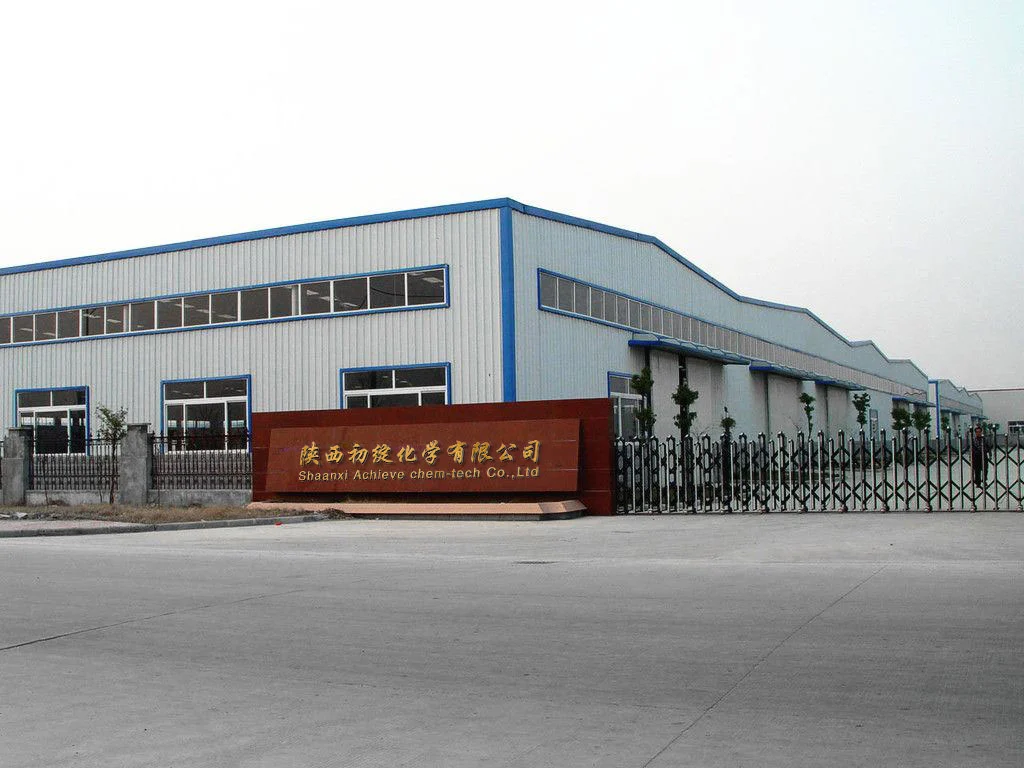
BLOOMTECHZ
